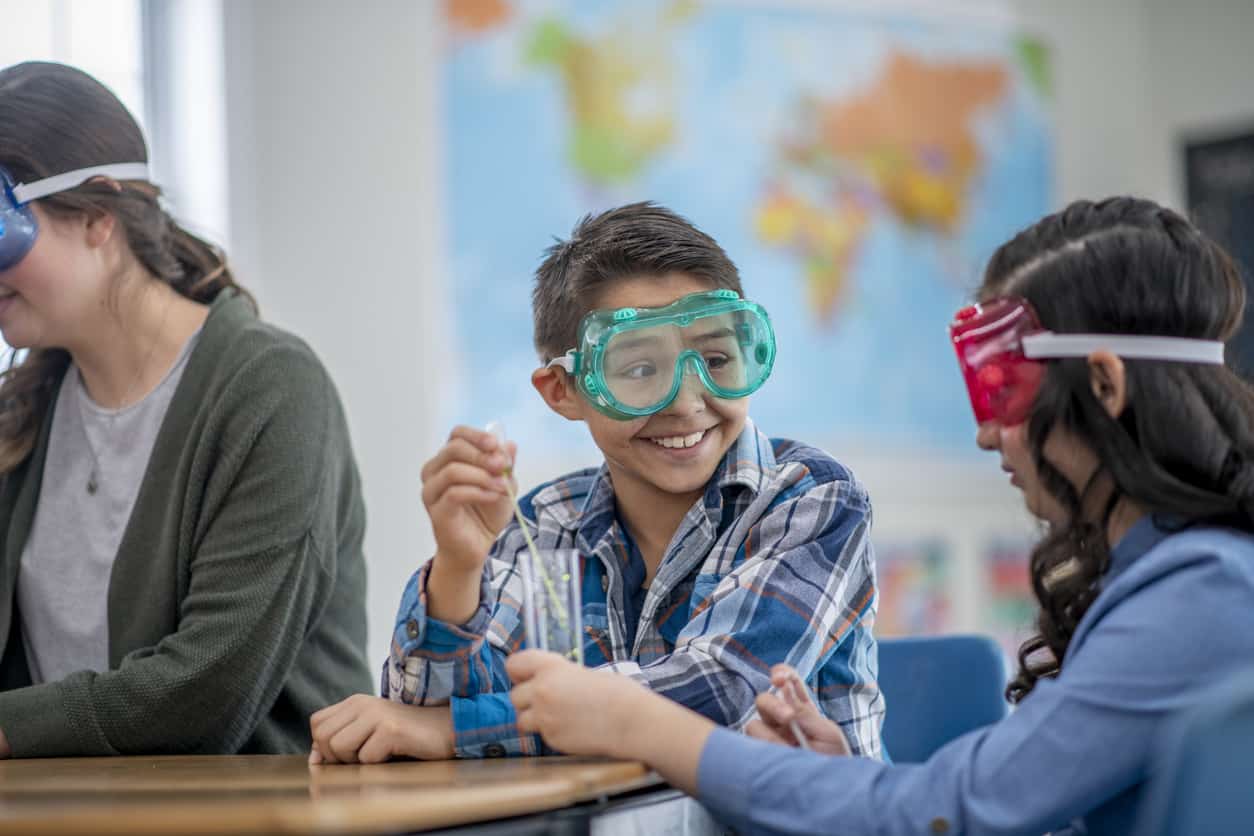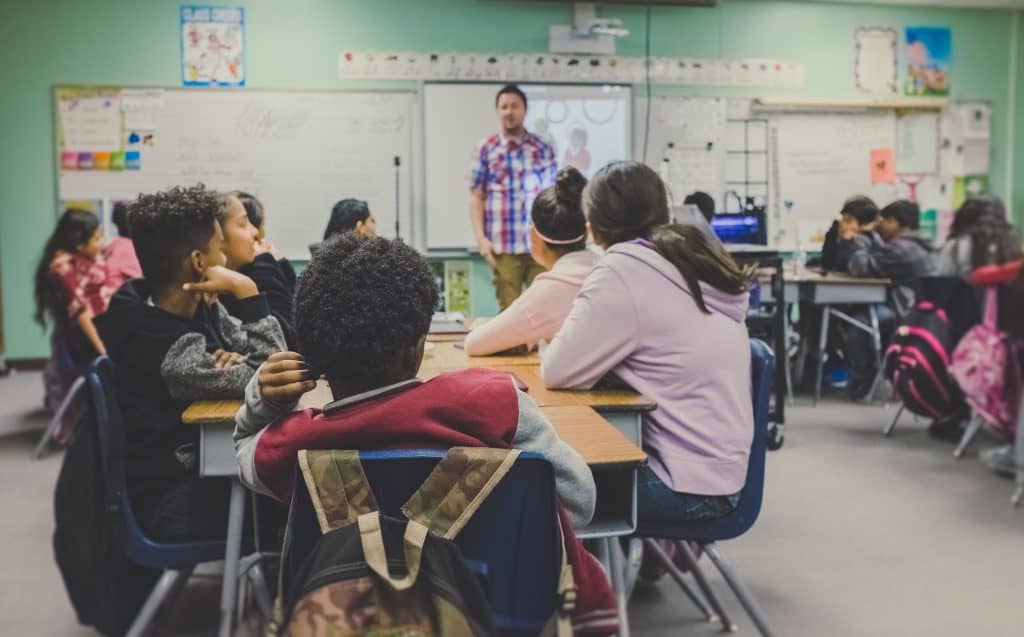Following educational trends can sometimes feel like watching fads come and go—confusing at best and frustrating at worst. But keeping an eye on these trends can be helpful in addition to completing your professional development requirements. Many are based on educational research or current events that can help you support your students more effectively.
We’ve rounded up 10 educational trends and issues you should know about. You may find one (or several) you want to research in greater depth for your students. Some, like mindfulness and trauma-informed practices, have long been important—and they may be even more critical this year. Others, like genius hour and standards-based grading, are recently arrived educational trends that may have a helpful place in your classroom.

1. Standards-Based Grading
Many teachers are looking for alternatives to letter grading. Some worry that traditional grading methods do not accurately measure student progress.[1]
Standards-based grading measures how well students have developed the skills they learned in class and allows opportunities for resubmission. Ultimately, students are graded as either having reached proficiency or not for a concept rather than grading on an A to F scale. In this way, students can continue to practice skills until they become proficient and avoid becoming discouraged.[2]
2. Personalized Learning
Over the past few years, the buzz around personalized learning has been on the rise. Why keep an eye on personalized learning? When a school curriculum is adaptive to a student’s unique needs, it’s more likely to promote student progress because each child can move at their right pace.[3] Plus, adaptive software programs allow teachers to use the same program for all students in their classroom—including those with learning disabilities.
3. Trauma-Informed Practices
Trauma-informed practices refer to any intervention designed to respond to the unique needs of children who have experienced trauma. Because more than half of all children will experience a traumatic event before adulthood, it is essential to conduct training and implement strategies that support these children.[4] Teachers and students have all experienced the traumatic effects of the COVID-19 pandemic, which has raised this particular trend to even higher levels of discussion than before.
For a more in-depth discussion on trauma-informed practices, check out this Today.com article where Waterford SVP of Curriculum and Instruction Jenni Torres describes how she emotionally supported her students in New Orleans following Hurricane Katrina.
4. Genius Hour
Genius Hour is a fairly new educational technique that allows students to work on self-paced and self-chosen projects for an hour each day.[5] This encourages students to practice their creativity and independent thinking skills, and they can also develop a genuine love of learning. If you’re looking for ways to improve student engagement in your classroom, genius spaces may be a trend to keep tabs on.
5. Digital Citizenship
For students, digital citizenship is defined as the ability to use technology and the Internet both effectively and appropriately. Good digital citizenship is increasingly necessary, but as assignments and lessons traditionally done in person move online, it’s even more vital for students to build the skills they need to develop a healthy relationship with digital media.
6. Bite-Sized Learning
Bite-sized learning teaches children specific academic skills with brief, focused activities. It “takes into account the contemporary demands of learner lifestyles that might hinder longer periods of focused study and time spent in the classroom.” [6] In other words, it allows students to learn real skills that build on each other in convenient, shorter bursts over time instead of all at once in long classroom lessons or lectures.
If classes continue to be primarily (or even partially) online next year, bite-sized learning activities may be especially useful. Strategically using brief activities to teach new skills allows teachers to take into account a student’s capacity for long and focused lessons from home. Or, if students return to your classroom, this technique can be useful for making the most of time spent in class.

7. Mindfulness
The practice of mindfulness involves being aware of, and accepting, both the external world and our internal experiences. By teaching mindfulness in the classroom, you can help improve students’ response to stress and reduce their overall stress levels.[7] This can make it useful for social-emotional and mindset skill lessons, as well as for helping students who are feeling overwhelmed.
8. Brain Break
Brain breaks are short, five- to ten-minute activities—like dancing or standing up to stretch— that allow students to stay refreshed after focusing in class for a long period of time. These are most effective when scheduled throughout the school day. By taking these breaks, students are less likely to feel stressed or anxious, and they will be better able to focus on their next lesson or task.[8]
9. Experiential Learning
Experiential learning is a strategy that, according to Western Governors University, allows students to learn and develop skills in a setting outside of the classroom.[10] For elementary students, options for experiential learning may be limited. But you can still make the most of this strategy by taking students on field trips (virtual or otherwise) and providing students with assignments that encourage them to learn outside of school.
10. STEAM Curriculum
You may be familiar with STEM (science, technology, engineering, and math) curriculum and how it prepares students to enter the workforce with practical, high-demand skills. But adding the arts alongside these subjects (thus creating STEAM: STEM plus arts) can improve your students’ academic performance.
For example, adding art assignments to science and math lessons can help all learners understand STEM subjects better. And it improves creativity—a useful skill for any academic subject.[9] Plus, STEAM curriculum is shown to provide students with a more well-rounded and practical education than STEM alone.[11]
Source:
- Long, Cindy. Are Letter Grades Failing Our Students? National Education Association. August 19, 2015. https://www.nea.org/advocating-for-change/new-from-nea/are-letter-grades-failing-our-students.
- Westberry, L. Grading for Mastery, Not Mystery. ASCD. July 11, 2019. https://www.ascd.org/el/articles/grading-for-mastery-not-mystery.
- Pane, J.F., Steiner, E.D., Baird, M.D., Hamilton, L.S., and Pane, J.D. How Does Personalized Learning Affect Student Achievement? Retrieved from rand.org: https://www.rand.org/pubs/research_briefs/RB9994.html.
- Copeland, W.E., Keeler, G., Angold, A., & Costello, E.J. Traumatic events and posttraumatic stress in childhood. Archives of General Psychiatry, 2007, 64(5), pp. 577-584.
- Fink, J.L.W. Genius Hour in the Classroom. Scholastic. https://www.scholastic.com/teachers/articles/18-19/genius-hour-in-the-classroom-/.
- Blue, J. Little and often: bite-sized learning. Cambridge World of Better Learning. April 26, 2018. https://www.cambridge.org/elt/blog/2018/04/26/bite-sized-learning/.
- Davidson, R. and Lutz, A. Buddha’s brain: neuroplasticity and meditation. IEEE Signal Process Magazine, 2008, 25(1), pp. 174–176.
- Morin, A. How brain breaks can help kids with homework frustration. Understood. https://www.understood.org/articles/en/brain-breaks-what-you-need-to-know.
- Hardiman, M.M., JohnBull, R.M., Carran, D.T., and Shelton, A. The effects of arts-integrated instruction on memory for science content. Trends in Neuroscience and Education, March 2019, 14, pp. 25-32.
- Western Governors University Staff. Experiential learning theory. June 8, 2020. https://www.wgu.edu/blog/experiential-learning-theory2006.html#close
- University of Houston. Art could help create a better “STEM” student. https://www.sciencedaily.com/releases/2013/12/131203091633.htm.

